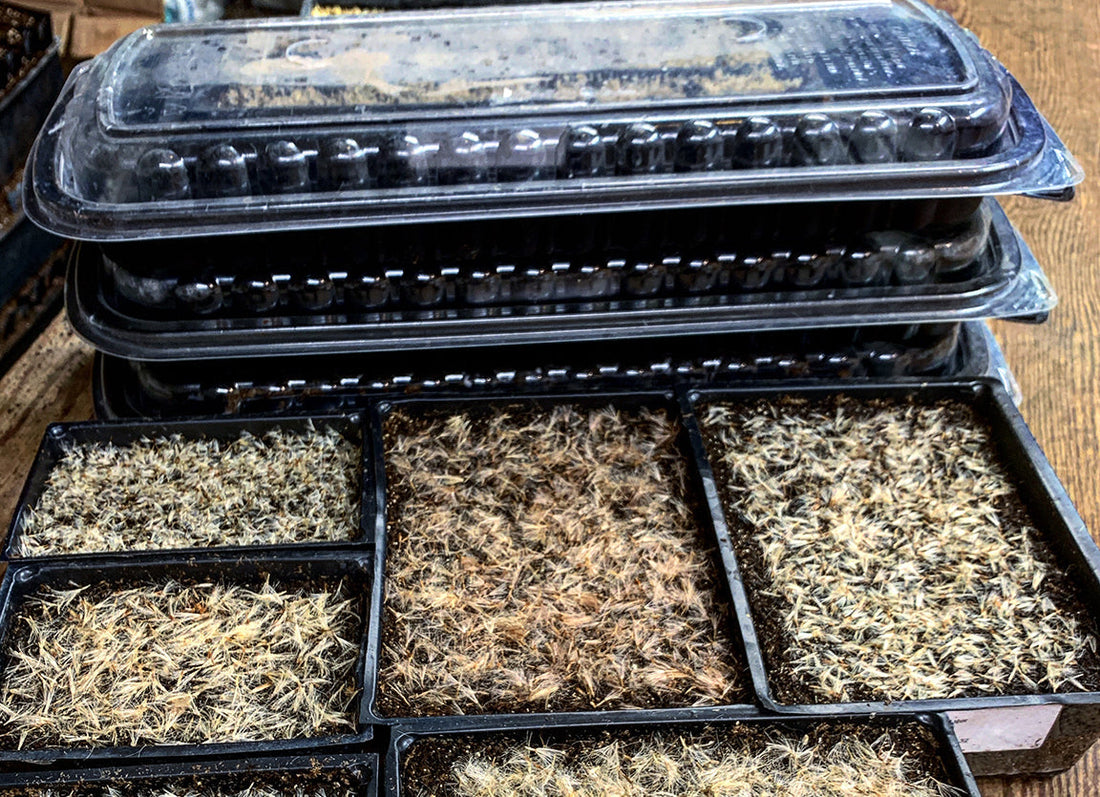
Seeding Native Wildflowers
Share
Whether you're starting wildflower seeds in containers or seeding directly into your landscape, a few thoughtful steps can make a big difference in your success rate. Native wildflowers may take time and patience, but the rewards are well worth it.
Germinating in Containers
- Sow seeds in a sterile, soil-less mix, firmly pressed down in a labeled container.
- Sprinkle seeds evenly across the level surface of the soil.
- Cover seeds appropriately:
- As a general rule, cover seeds to a depth twice their diameter.
- Very fine seeds should be left on the surface and covered with plastic (like Glad Press & Seal) or placed in a clear plastic bag.
- You can also use clear plastic lids or a light cover of vermiculite to keep humidity levels high—especially helpful in Alberta’s dry climate.
- Water carefully: Use warm water in a spray bottle to gently saturate the soil surface and ensure good seed-to-soil contact—without washing your carefully placed seeds into a clump.
- Keep soil moist but not wet: Spritz the surface as needed if it looks like it’s drying out.
- Your seedlings may require a cool period to break dormancy. You can place seeded containers in the fridge (monitor for mold and germination), or set them outside in a protected location. The milk jug method is great for longer cold periods.
- Provide warmth and light: Once germination begins, remove plastic covers to prevent damping off. Transplant once the first true leaves have opened.
Direct Seeding Outdoors
- Estimate seeding rate: For prairie meadow plantings, aim for 15 to 30 seeds per square foot.
- Water the site thoroughly a day or two before seeding to ensure good soil moisture and reduce the need for heavy watering after sowing.
- Mix seed with a medium: Combine your seed 50/50 with potting soil or sand—something that contrasts with the soil at your site to help visualize coverage.
- Broadcast the mix: Hand-broadcast seed evenly over your prepared site. Use a spice container or shaker for control. For large areas, divide your seed and planting space into sections to ensure even distribution.
- Ensure good seed-to-soil contact: Press the seed into the soil with your foot or a board. A firm seedbed (with barely visible footprints) helps prevent loss to wind or birds.
- You may lightly sprinkle peat or vermiculite to retain moisture—but don’t bury the seeds too deeply, especially fine seeds.
- Water gently: Use a sprinkler to thoroughly moisten the area. If you pre-watered the site, a light mist may be enough to settle the seed.
- Mulch lightly (optional): A thin layer of leaf litter or grass clippings can help. Avoid wood chips or thick mulch, which may block light or trap too much moisture.
